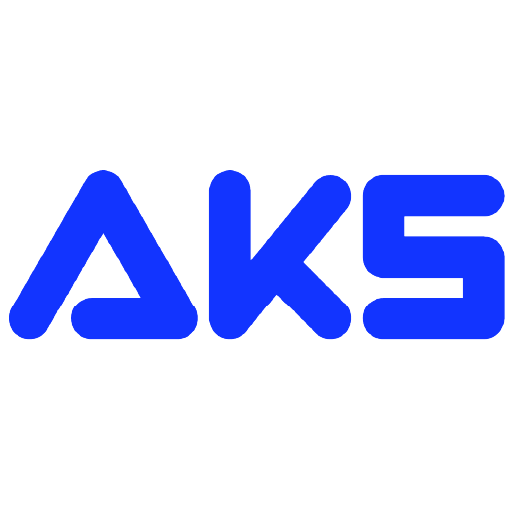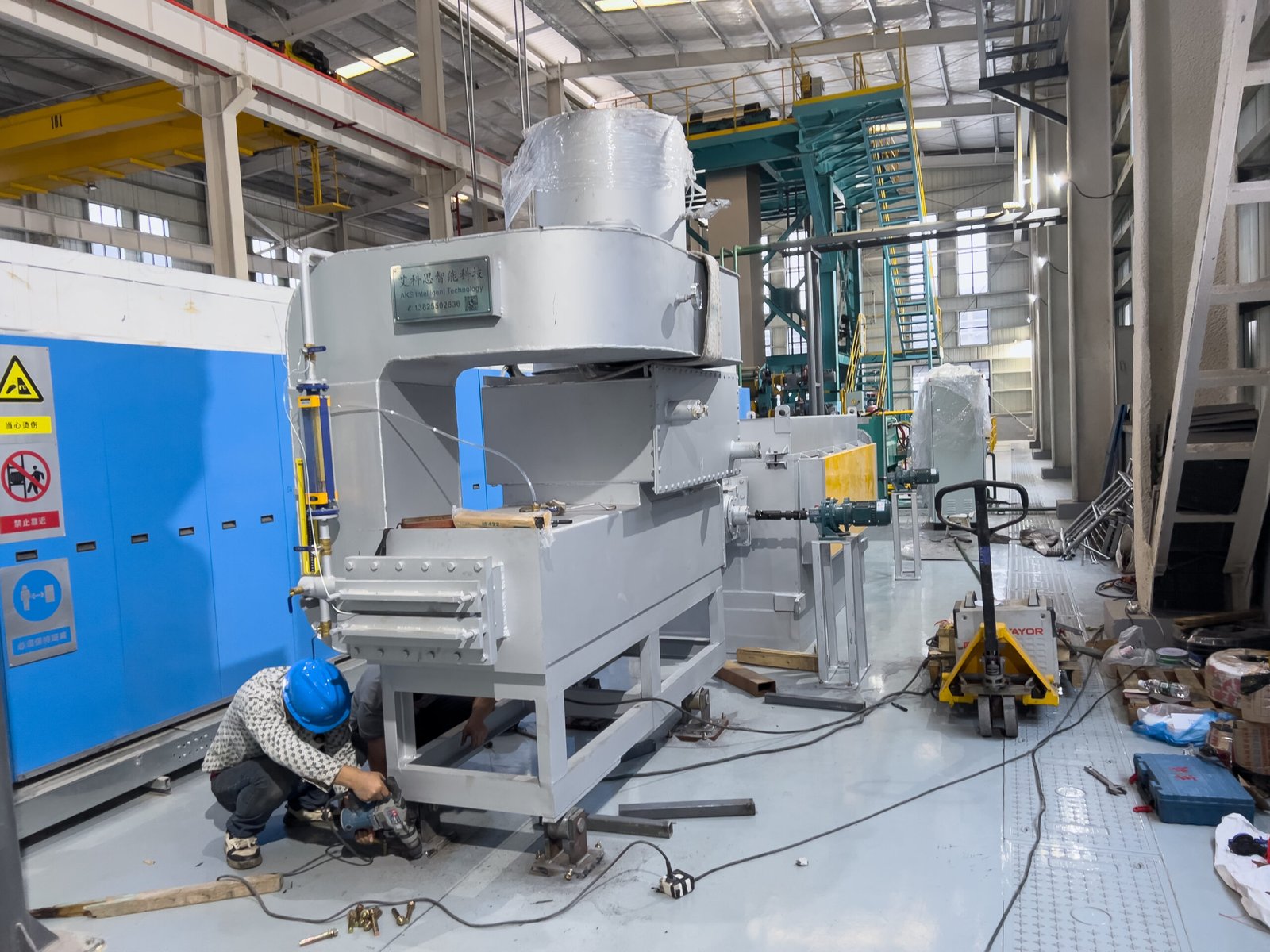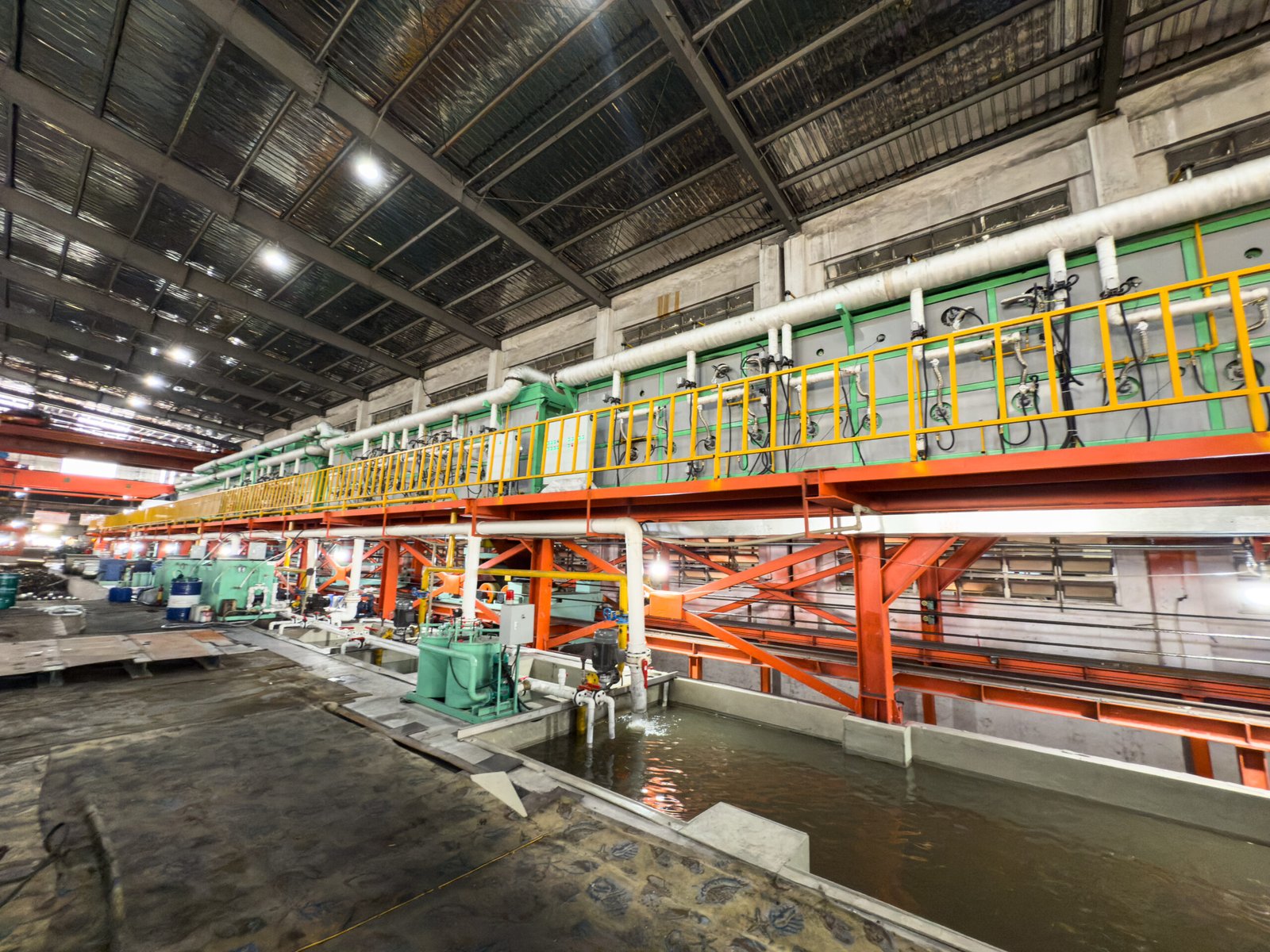How to Optimize Bright Annealing of Stainless Steel: Key Parameters Checklist
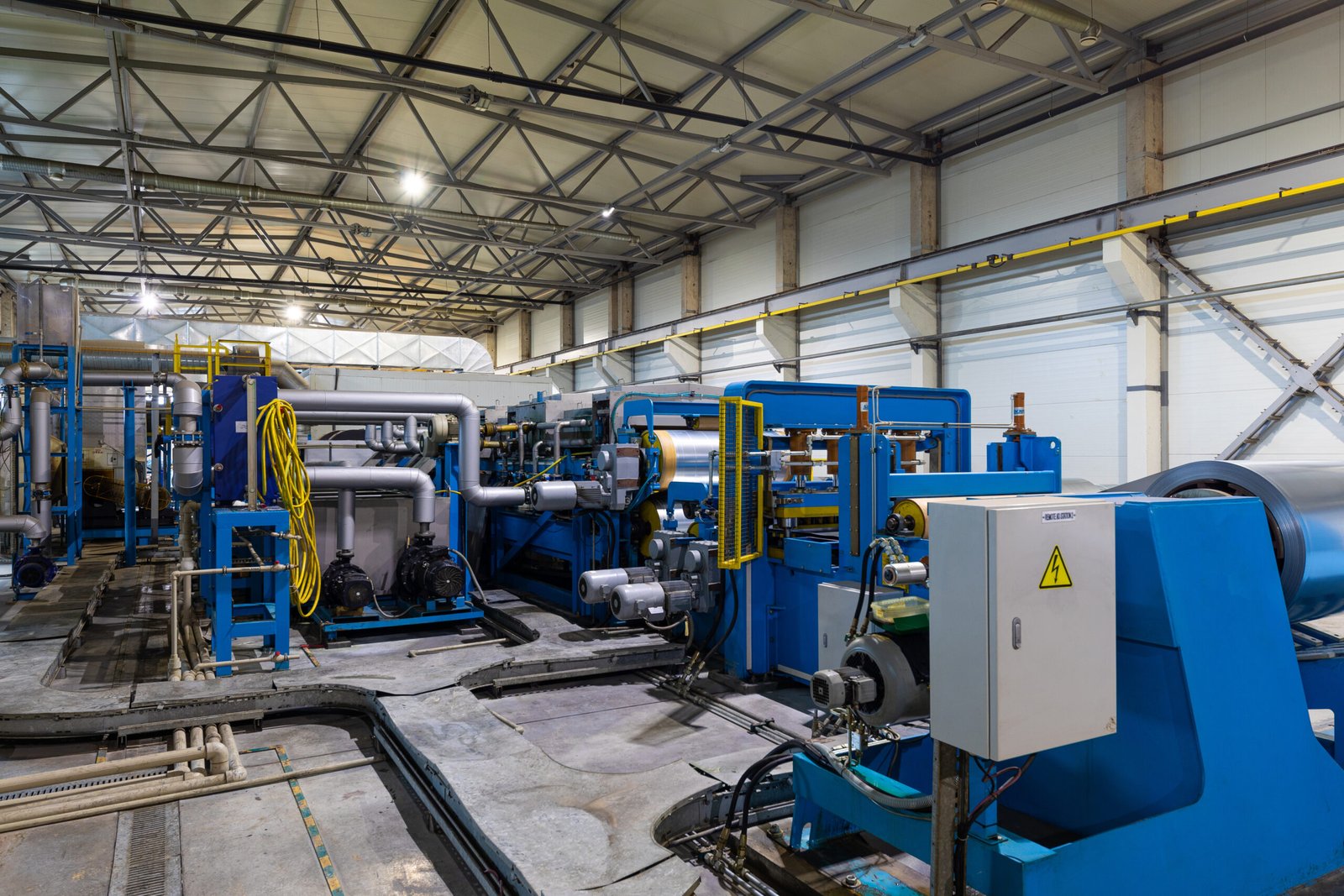
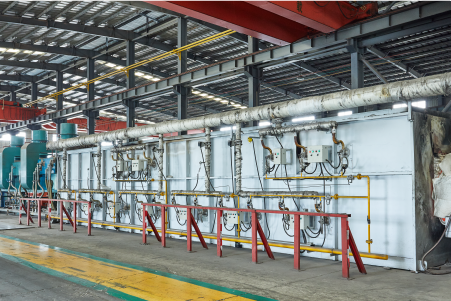
Struggling to achieve that perfect, mirror-like finish on your stainless steel parts? You’re not alone. Many manufacturers grapple with inconsistent results, leading to costly rework and rejected batches. The secret lies not just in the furnace, but in mastering the key process parameters for a flawless bright anneal.
Achieving a perfect bright anneal for stainless steel involves precise control over four critical parameters: annealing time, protective atmosphere dew point, cooling rate, and the furnace's temperature uniformity. Optimizing these factors ensures complete recrystallization, prevents surface oxidation, and guarantees the desired metallurgical properties and brilliant finish.
Getting these parameters right can feel like a delicate balancing act. But with the right knowledge and equipment, you can turn this challenge into a competitive advantage. I’ve spent years helping clients fine-tune their processes, and I want to share the core principles that will help you achieve consistent, high-quality results, reduce waste, and boost your operational efficiency. Let's dive into the specifics.
At my company, AKS Furnace, we believe that a deep understanding of the "why" behind the process is just as important as the equipment itself. Simply buying a state-of-the-art furnace isn't a silver bullet. The true optimization comes from a synergistic relationship between machine and method. For instance, a client in the automotive sector, "Precision Pipes Ltd.," was producing stainless steel exhaust components. They had a top-tier furnace but were plagued by intermittent surface dullness and inconsistent hardness. The issue wasn't a faulty machine; it was a process that wasn't adapted to the specific grade of steel they were using. This highlights a critical lesson: successful bright annealing is a science of specifics, not generalities. It requires a holistic approach that considers the material science, the thermal dynamics, and the atmospheric chemistry inside the furnace chamber.
What is the ideal annealing time for stainless steel bright annealing?
Are your annealed stainless steel parts too soft or still too hard? The problem often lies in the annealing time. Too short, and the metal's internal stresses remain; too long, and you risk excessive grain growth, which compromises structural integrity. Finding that perfect duration is key.
The ideal annealing time for stainless steel bright annealing depends on the material's thickness, grade, and the annealing temperature. Generally, for austenitic grades like 304, holding at a peak temperature (around 1040-1120°C) for a period calculated as one hour per inch of thickness is a starting point, followed by rapid cooling.
Determining the optimal annealing time is not a one-size-fits-all calculation. It's a crucial variable that directly influences the final mechanical properties and microstructure of the stainless steel. While general rules of thumb provide a baseline, true optimization requires a more nuanced understanding of the interplay between time, temperature, and material composition. For many of our clients, this is where they unlock significant gains in quality and consistency. I recall working with Precision Pipes Ltd., who manufacture high-spec stainless steel tubing. They were using a standardized 4-minute soak time for all their products based on their thinnest gauge material. This worked for some batches, but on thicker-walled tubes, they saw inconsistent flare test results, indicating incomplete annealing. By failing to adjust the soak time relative to the mass and thickness of the material, they were creating internal inconsistencies that only became apparent during final quality control. This experience underscores the necessity of moving beyond generic settings and developing a process sheet that tailors the annealing time to each specific product variant. It's a foundational step toward achieving repeatable, high-quality outcomes.
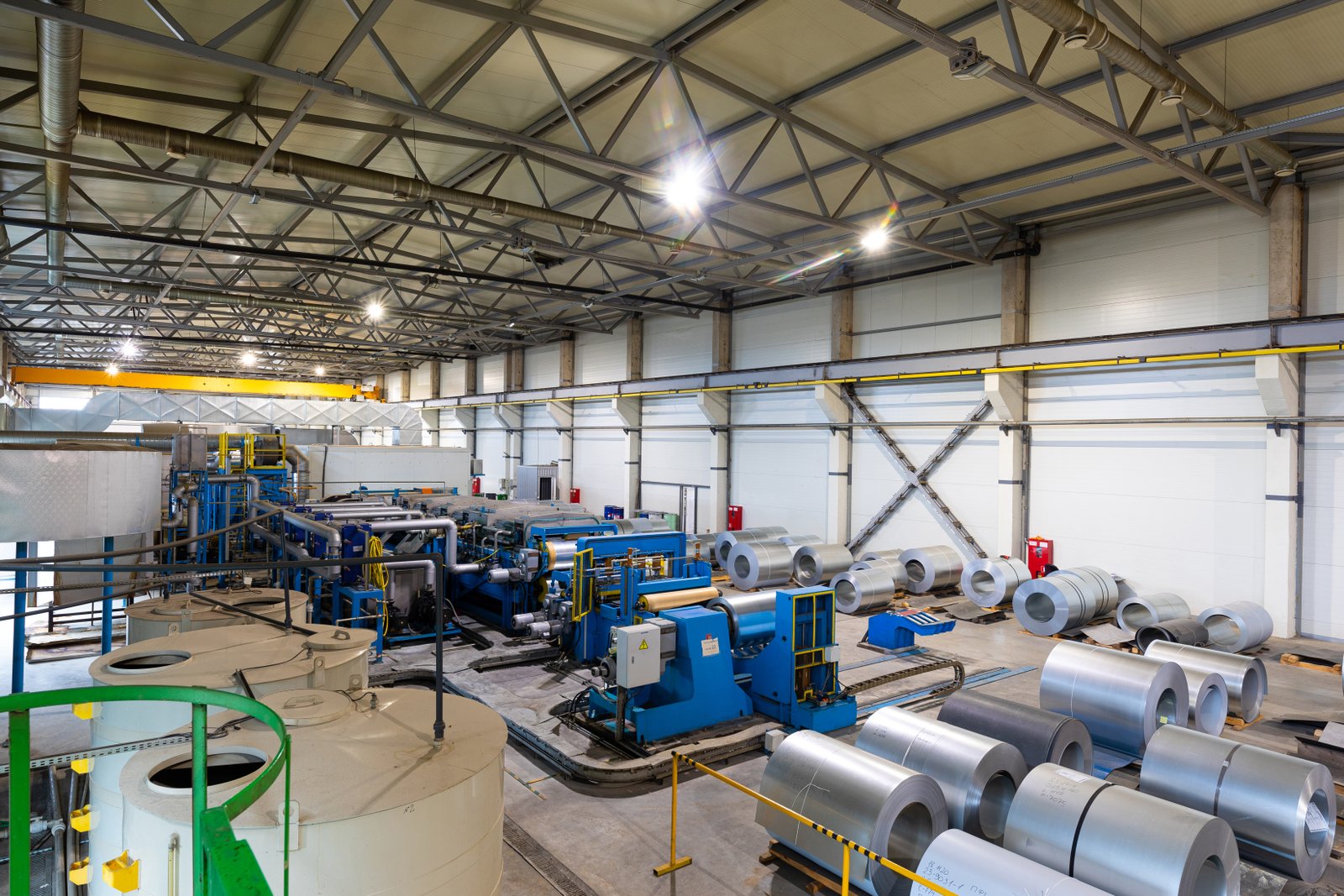
The question of "how long" in annealing is fundamentally a question of achieving full recrystallization without initiating detrimental grain growth. This balance is the cornerstone of effective heat treatment. For austenitic stainless steels, the goal is to dissolve chromium carbides that may have precipitated and to relieve stresses induced by cold working, restoring ductility. The time at temperature must be sufficient for these metallurgical transformations to complete throughout the entire cross-section of the material. However, once full recrystallization is achieved, any additional time at the high annealing temperature will only cause the newly formed grains to grow. Larger grains can lead to reduced strength, poor surface finish (known as "orange peel" effect after forming), and diminished fatigue life. Therefore, the process window can be quite narrow, demanding precise control.
The Science of Recrystallization and Grain Growth
Recrystallization is the process where deformed grains from cold working are replaced by new, stress-free grains. The process is heavily dependent on temperature; at a higher annealing temperature, the required time for recrystallization decreases exponentially. For a typical 304 stainless steel, annealing is often performed between 1040°C and 1120°C (1900°F and 2050°F). At these temperatures, the atomic mobility is high, allowing for the rapid formation of new grain structures. The soak time must be long enough for the heat to penetrate the material's full thickness and for the microstructure to fully transform. A common industry guideline is to soak for 3-5 minutes for thin strips or tubes once the material has reached the target temperature.
However, this is just a starting point. The level of prior cold work is a critical factor. A heavily cold-worked material has more stored energy, which acts as a driving force for recrystallization, meaning it can be annealed in a shorter time or at a lower temperature compared to a lightly worked material. For instance, a stainless steel strip with a 50% reduction in thickness will recrystallize much faster than one with only a 10% reduction. Overlooking this detail can lead to significant process inefficiencies or quality issues.
The other side of the coin is grain growth. After recrystallization is complete, the grains will start to coalesce and grow if the material is held at temperature. This is a diffusion-controlled process that is also time and temperature-dependent. Excessive grain size is often undesirable as it reduces the material's yield strength and toughness according to the Hall-Petch relationship. For applications requiring a fine-grained structure for superior formability and surface quality, minimizing time at temperature post-recrystallization is paramount. This is why continuous annealing furnaces, like our AKS Bright Annealing Furnaces, are often preferred for strip and wire, as they allow for precise control over the time-temperature profile.
Developing a Time-Temperature Matrix for Production
To move from theory to practice, manufacturers should develop a time-temperature matrix for their specific products. This involves documenting the material grade, thickness, and prior cold work for each part number. Then, through methodical testing—starting with recommended industry parameters and adjusting based on hardness tests, metallographic analysis, and mechanical property evaluations—an optimized recipe can be established. For example, Precision Pipes Ltd. initially ran all their 316L stainless tubing with a single setting. After our consultation, we helped them develop a matrix. Their 0.5mm wall thickness tubing now runs at 1080°C with a 2-minute soak, while their 2.0mm wall tubing runs at the same temperature but with a 6-minute soak.
This systematic approach eliminates guesswork. It involves creating test coupons for different cycle times and evaluating the results. Key metrics include Rockwell hardness (HRB), grain size measurement (as per ASTM E112), and visual inspection for surface quality. For their thicker-walled tubing, Precision Pipes Ltd. found that their original 4-minute cycle was leaving the core of the material only partially recrystallized, explaining the inconsistent mechanical test results.
Implementing this matrix within their production control system allowed them to automate the selection of the correct annealing cycle based on the job order. This not only improved product consistency but also enhanced throughput, as they were no longer using excessively long cycles for thinner materials. The energy savings, though small on a per-part basis, became substantial when scaled across their entire production volume.
Case Study: Optimizing Soak Time for Automotive Components
A key client of ours, a manufacturer of stainless steel sensor sleeves for the automotive exhaust industry, faced a high rejection rate due to cracking during the final flaring process. The material was a 1.5mm thick 304L stainless steel tube. Their process involved a 5-minute soak at 1060°C in a continuous mesh belt furnace. Our initial analysis showed that while the surface hardness was within spec, the grain structure was inconsistent, with larger grains on the outer diameter and finer grains toward the inner diameter.
The root cause was that the soak time was not sufficient for the thermal energy to uniformly penetrate the tube's cross-section. The outer surface reached the annealing temperature quickly and began grain growth, while the inner core was still undergoing recrystallization. When the tube exited the heating chamber, it had a heterogeneous microstructure that could not withstand the high degree of deformation during flaring.
Our solution was twofold. First, we recommended increasing the soak time to 7 minutes to ensure complete and uniform heating. Second, we slightly reduced the furnace setpoint temperature to 1050°C. This lower temperature slowed the kinetics of grain growth, providing a wider processing window to achieve full recrystallization without coarsening the grain structure. After implementing these changes, their rejection rate for cracking dropped by over 80%. This case perfectly illustrates that time cannot be considered in isolation; it is intrinsically linked to temperature and material geometry.
Annealing time depends on material thicknessTrue
Thicker stainless steel requires longer annealing time to ensure complete recrystallization throughout the cross-section.
All stainless grades need same annealing timeFalse
Different stainless steel grades (e.g., 304 vs 316L) require different annealing parameters due to varying alloy compositions.
How does the dew-point affect the bright annealing process?
Is your "bright" annealed steel coming out dull, hazy, or discolored? The culprit is often invisible: moisture in your furnace atmosphere. A high dew point means a failed protective atmosphere, leading directly to surface oxidation and tarnishing the very brightness you’re trying to achieve.
The dew point, which measures the moisture content in the furnace's protective atmosphere, is critical for bright annealing. To prevent oxidation of elements like chromium in stainless steel, the dew point must be kept extremely low, typically below -40°C (-40°F), ensuring a reducing, not oxidizing, environment.
In bright annealing, the term "bright" is a direct reflection of the furnace atmosphere's quality. The entire process is predicated on heating and cooling the steel without allowing its surface to react with oxygen. While we often focus on removing oxygen from the furnace, the real threat is often water vapor (H₂O), as it becomes a powerful oxidizing agent at high temperatures. The dew point is the most practical measure of this moisture content. A low dew point signifies a dry, pure, and effective protective gas. I’ve seen clients invest heavily in high-purity hydrogen or nitrogen gas, only to see poor results because of a small leak in a fitting or using gas lines that weren't properly purged, introducing moisture into the system. It’s a classic case of a chain being only as strong as its weakest link. For Precision Pipes Ltd., their initial issues with surface "frosting" were not due to the bulk gas supply, but from an inefficient furnace purge cycle that failed to remove all the ambient, moisture-laden air before the heating process began. Controlling the dew point is not just a recommendation; it's a fundamental requirement for success.
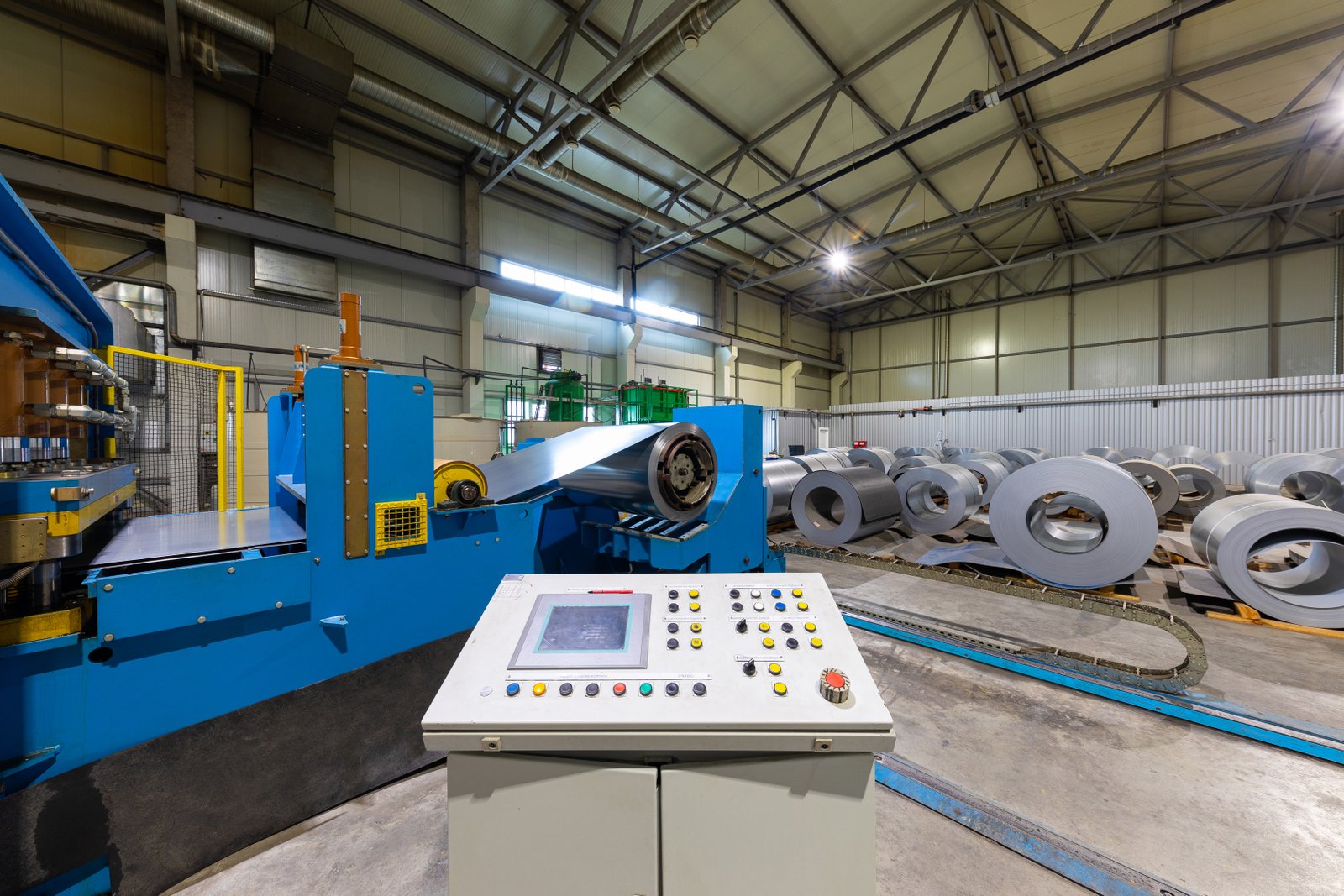
Understanding the role of the dew point requires a brief dive into the chemistry of high-temperature metal treatment. The protective atmosphere in a bright annealing furnace, typically cracked ammonia (75% H₂, 25% N₂) or pure hydrogen1, is designed to be a reducing environment. This means it has a chemical affinity to remove oxygen rather than donate it. However, water vapor (H₂O) present in the atmosphere can dissociate at high temperatures into hydrogen and oxygen. This free oxygen will readily oxidize the reactive elements in the stainless steel, primarily chromium (Cr), but also manganese (Mn) and silicon (Si). The result is a thin, tenacious layer of oxides on the steel's surface, which manifests as a dull, matte, or sometimes rainbow-colored finish instead of a bright, reflective one. The dew point directly tells us the temperature to which the atmosphere would need to be cooled for this water vapor to condense. Therefore, a lower dew point equals a drier, purer atmosphere with less oxidizing potential.
The Ellingham Diagram and Oxide Formation
To understand the dew point's importance scientifically, one can refer to an Ellingham diagram2, which plots the stability of metal oxides as a function of temperature. For stainless steel, the key element is chromium. The diagram shows that to prevent the formation of chromium oxide (Cr₂O₃) at typical annealing temperatures (above 1000°C), the oxygen partial pressure in the furnace must be incredibly low. This corresponds to a very low dew point. For most 300-series stainless steels, a dew point of -40°C is considered the minimum for a good result, but for steels with more sensitive elements like titanium or aluminum, the requirement can be -60°C or even lower.
At these low dew points, the hydrogen in the atmosphere actively scavenges any available oxygen atoms, forming H₂O that is then flushed out. The chemical equilibrium shifts in favor of reduction, meaning any native oxides on the steel's surface can actually be reduced, further enhancing brightness. If the dew point rises, this equilibrium can shift. For instance, a dew point of -20°C might be sufficient to prevent the oxidation of iron (Fe), but it is far too high to protect the chromium. This is why a carbon steel part might come out bright from a furnace setting that leaves a stainless steel part dull.
Achieving and maintaining this low dew point is a technical challenge. It requires a furnace with excellent sealing to prevent air ingress, high-purity process gas, and well-maintained gas delivery systems free of leaks or moisture traps. In our AKS furnaces, we utilize high-integrity welds, specialized door seals, and recommend the use of an in-line dew point analyzer to give our clients real-time control over this critical parameter.
Common Sources of Atmosphere Contamination
Even with the best furnace and gas supply, a high dew point can sabotage the process. Identifying the sources of moisture contamination is key to consistent bright annealing. The most common culprits are leaks in the furnace shell or gas lines, which allow ambient air (with its relatively high humidity) to be drawn into the system. Another major source is the material being processed itself. If parts are not thoroughly cleaned and dried, any residual oils or water will vaporize in the furnace, dramatically increasing the dew point.
A less obvious source is the refractory material used to line the furnace. Refractories can absorb moisture from the air during shutdowns or maintenance periods. When the furnace is heated up, this moisture is slowly released into the protective atmosphere, a phenomenon known as "outgassing." This is why a proper furnace pre-heating and purging cycle is essential before introducing any product. At Precision Pipes Ltd., we discovered their shortened startup procedure was not allowing enough time for the refractory to fully outgas, leading to inconsistent results in the first few batches of the day.
To combat this, a robust process involves a multi-stage purge. First, an inert gas like nitrogen can be used to displace the bulk of the air. Then, the protective gas (e.g., hydrogen) is introduced while the furnace heats up, allowing its reducing power and the increasing temperature to drive off any adsorbed moisture from the furnace lining and internals before the steel reaches a critical oxidation temperature.
Monitoring and Control in Practice
Relying on the purity certificate of your gas supply is not enough; you must monitor the dew point inside the furnace, where it matters. Modern bright annealing lines should be equipped with continuous dew point sensors at both the gas inlet and, more importantly, the outlet. The outlet reading gives a true indication of the atmosphere's condition after it has passed through the furnace and interacted with the parts and lining. A significant difference between the inlet and outlet dew point readings signals a problem, such as a leak or contaminated parts.
For one of our clients in the electronics hardware sector, who produces bright annealed stainless steel connectors, batch-to-batch consistency is paramount. They integrated a dew point sensor with their furnace's SCADA (Supervisory Control and Data Acquisition) system. This allowed them to set process alarms: if the outlet dew point rose above -35°C, the system would alert the operator. They also used the data to optimize their process. They found that by extending their initial purge cycle by 10 minutes, the dew point stabilized much faster, allowing them to start production sooner and with greater confidence. This data-driven approach transformed their process from reactive troubleshooting to proactive quality assurance, making dew point management a cornerstone of their quality control system.
Dew point below -40°C prevents oxidationTrue
Maintaining dew point below -40°C creates a reducing atmosphere that prevents chromium oxidation in stainless steel during bright annealing.
Water vapor is harmless in annealingFalse
Water vapor dissociates into oxygen at high temperatures, becoming a powerful oxidizing agent that causes surface defects in bright annealing.
What is the significance of cooling rate in stainless steel annealing?
Have your perfectly annealed parts failed corrosion tests or shown unexpected brittleness? The problem might not be the heat, but the cool-down. An improper cooling rate can undo all the benefits of annealing, leading to metallurgical flaws that compromise the steel's performance and longevity.
The cooling rate in stainless steel annealing is critical for preventing sensitization, a phenomenon where chromium carbides precipitate at grain boundaries. Rapid cooling through the critical temperature range of 850°C to 450°C is essential for most austenitic grades to maintain corrosion resistance and toughness.
Cooling is not a passive end to the annealing cycle; it is an active and critical phase of heat treatment. For austenitic stainless steels, the rate at which the material cools from its annealing temperature dictates whether it will retain its superior corrosion resistance or become susceptible to intergranular attack. This susceptibility, known as sensitization, occurs when the cooling is too slow, allowing harmful chromium carbides to form. Many manufacturers focus intensely on the heating and soaking stages, only to neglect the cooling profile, which can be a costly oversight. A client producing stainless steel components for marine applications learned this the hard way. Their parts looked perfect—bright and properly softened—but failed prematurely in saltwater environments. The culprit was slow cooling in their outdated furnace, which created a sensitized microstructure. Upgrading to a furnace with an advanced cooling system wasn't just about speed; it was about preserving the metallurgical integrity they had worked so hard to achieve during heating. It highlights that the entire thermal cycle, from ramp-up to cool-down, must be precisely controlled.
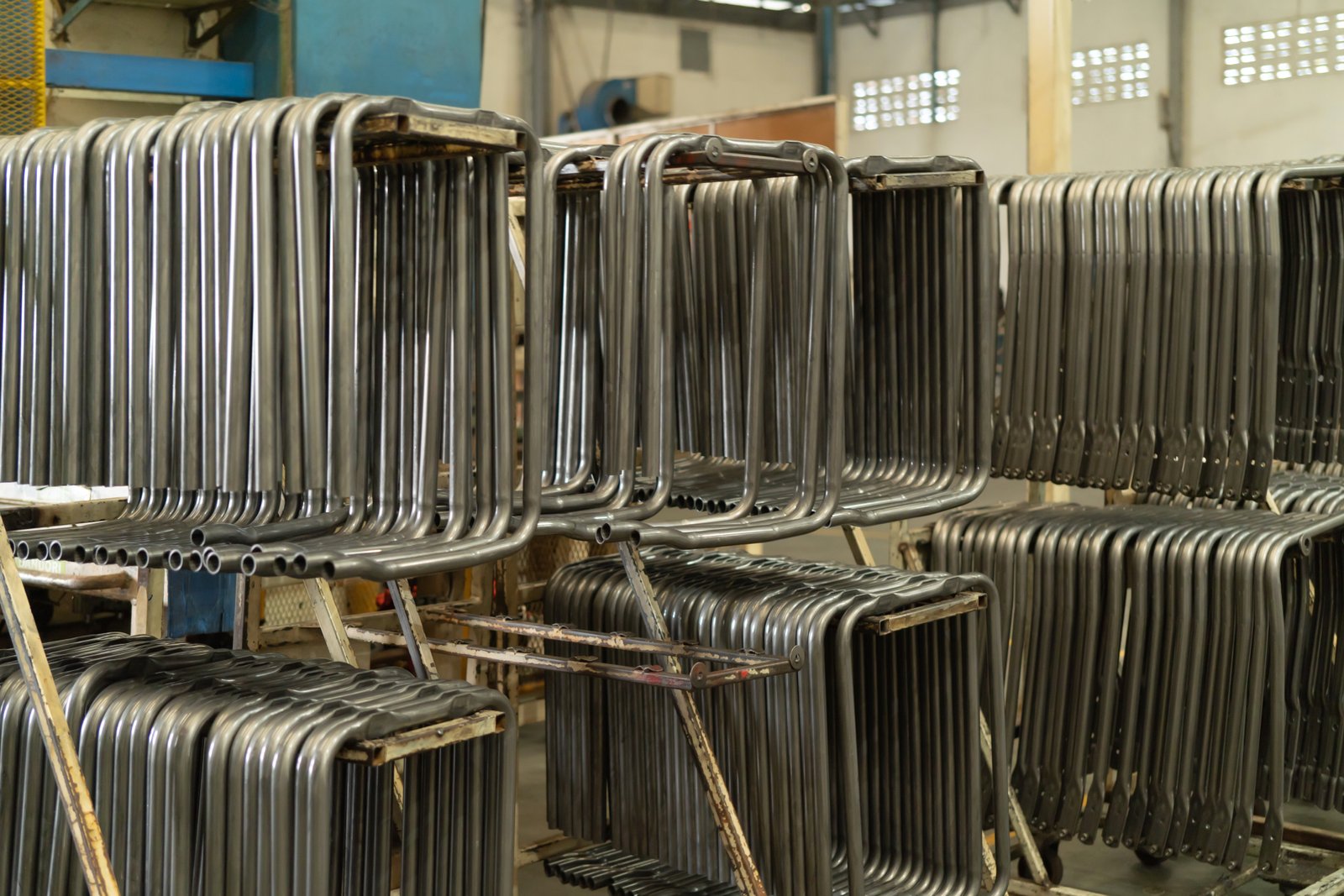
The significance of the cooling rate is rooted in the phase transformations and diffusion kinetics within the steel's microstructure. When austenitic stainless steel (like grades 304 or 316 stainless steel3) is held at its annealing temperature (e.g., 1050°C), carbon is dissolved uniformly within the austenite matrix. The goal of cooling is to "lock in" this solid solution structure by bringing the material to room temperature. However, as the steel cools, it passes through a temperature range where carbon's solubility in austenite decreases. If the cooling is slow, the carbon has time to diffuse to the grain boundaries and combine with chromium to form chromium carbide (Cr₂₃C₆) precipitates. This process depletes the chromium from the regions adjacent to the grain boundaries, leaving them vulnerable to corrosion. Rapid cooling is the primary defense against this detrimental phenomenon.
The Metallurgical Science of Cooling: Preventing Sensitization
Sensitization is the primary danger of slow cooling. The critical temperature range for carbide precipitation in most austenitic stainless steels is between approximately 850°C and 450°C (1550°F to 850°F). When chromium gets locked into carbides at the grain boundaries, the chromium content in the surrounding area can drop below the 10.5-12% minimum required to form the passive, corrosion-resistant oxide layer that defines stainless steel. This makes the grain boundaries anodic relative to the grain centers, creating a perfect pathway for intergranular corrosion (IGC) when exposed to a corrosive environment. The material can literally fall apart along its grain lines, even if it appears visually intact.
To prevent this, the material must be cooled through this critical range quickly enough to prevent carbon diffusion and carbide formation. This is why water quenching is a traditional method for annealing thick stainless steel sections. However, for continuous bright annealing of strips or tubes, quenching is impractical and can cause distortion. Instead, modern furnaces use advanced forced convection cooling systems. These systems use high-velocity jets of the protective atmosphere (hydrogen or nitrogen), cooled via a heat exchanger, to rapidly and uniformly extract heat from the material. Our AKS furnaces, for example, feature an Advanced Cooling System that allows for precise control over cooling profiles, ensuring the material passes through the sensitization zone in seconds, not minutes.
The required cooling rate depends on the carbon content of the steel. Higher carbon grades are more susceptible to sensitization and require faster cooling. This is why "L" grades, like 304L or 316L, were developed. With a maximum carbon content of 0.03%, they have a much lower propensity to form carbides, making them more forgiving to slower cooling rates, such as those encountered during welding.
Engineering the Ideal Cooling Curve: A Systems Approach
Achieving the ideal cooling curve is an engineering challenge that involves the entire furnace cooling section. It’s not just about blowing cold gas on hot metal. The cooling must be uniform to prevent thermal distortion, which can ruin the flatness of a strip or the straightness of a tube. This is achieved through careful design of the cooling chamber, plenums, and nozzle arrangement to ensure a consistent heat transfer coefficient across the entire surface of the product. The cooling gas itself must remain pure and at a low dew point; otherwise, the steel can re-oxidize during the cool-down phase, even after a perfect heating cycle.
This is where a furnace's design becomes critical. A well-designed cooling section is typically long and divided into multiple zones. The initial zone provides the most aggressive cooling to quickly drop the temperature through the sensitization range. Subsequent zones can have lower gas velocities, allowing for a more controlled and less stressful cooling down to the exit temperature. In our designs, we incorporate a waste heat recovery system. The hot gas exiting the furnace doesn't just get vented; its thermal energy is used to preheat the incoming process gas. This not only improves thermal efficiency and saves energy but also contributes to the overall stability of the process.
| Parameter | Manual/Outdated Cooling System | Advanced Automated Cooling System |
|---|---|---|
| Control Method | Manual valve adjustments for gas flow. | PLC-controlled variable speed fans & dampers. |
| Uniformity | Poor. Leads to hot/cold spots, distortion. | Excellent. Optimized nozzle design ensures even cooling. |
| Sensitization Risk | High, especially with thicker materials. | Very low. Rapid cooling through critical range. |
| Repeatability | Low. Dependent on operator skill. | High. Stored recipes ensure identical cooling profiles. |
| Energy Efficiency | Low. High gas consumption, no heat recovery. | High. Integrated waste heat recovery. |
Case Study: Solving Corrosion Failures at Precision Pipes Ltd.
Our client, Precision Pipes Ltd., expanded their product line to include stainless steel tubing for desalination plants, a highly corrosive environment. Initially, they used their existing annealing furnace. The tubes passed all dimensional and hardness tests, but field samples began failing within months due to severe pitting and intergranular corrosion. An analysis of the failed parts revealed classic sensitization, with extensive chromium carbide networks along the grain boundaries.
Their furnace had a rudimentary cooling section that relied on ambiently cooled protective gas flowing gently over the tubes. While sufficient for their automotive-grade products, the cooling rate was far too slow for the higher-spec marine application, allowing the 316 stainless steel to become sensitized. The cost of the field failures and the damage to their reputation were significant.
We worked with them to install a new AKS continuous bright annealing line equipped with a multi-zone, high-convection cooling system. We profiled the furnace to ensure the tubes cooled from 1050°C to below 400°C in under 90 seconds. The new system provided rapid, uniform cooling that completely suppressed carbide precipitation. Post-installation, their products passed the ASTM A262 Practice A corrosion test with flying colors. This turnaround not only saved their contract but also allowed them to confidently enter other high-stakes markets. It was a powerful lesson in how the unseen metallurgical details, controlled by the cooling rate, are just as important as the visible brightness of the final product.
Rapid cooling prevents sensitizationTrue
Fast cooling through 850°C-450°C range prevents chromium carbide formation at grain boundaries, maintaining corrosion resistance.
Slow cooling improves steel toughnessFalse
Slow cooling actually reduces toughness by allowing harmful chromium carbides to form, making steel susceptible to intergranular corrosion.
How to monitor and adjust annealing parameters for best results?
Are you relying on guesswork and tribal knowledge to run your annealing line? This approach leads to inconsistent quality, high scrap rates, and an inability to diagnose problems effectively. To achieve the best results, you must move from reactive adjustments to proactive, data-driven process control.
To achieve optimal annealing results, continuously monitor key parameters using sensors for temperature, atmosphere, and line speed. Use a PLC or SCADA system to log this data, enabling real-time adjustments and ensuring the process stays within its specified control limits.
In modern manufacturing, what you can't measure, you can't control. This is especially true for a complex thermal process like bright annealing. Simply setting the furnace dials to a supposed "golden recipe" and hoping for the best is a recipe for disaster. The best results are achieved when operators have a live, transparent view of what is happening inside the furnace at all times. This requires a robust system of sensors and controls that provide actionable data. I’ve visited many plants where the only process check is a visual inspection at the end of the line. When a problem like discoloration occurs, it’s impossible to pinpoint the cause. Was it a temperature dip? A spike in the dew point? A change in line speed? Without data, the "fix" is often a series of stabs in the dark. Implementing a comprehensive monitoring system changes this dynamic entirely, transforming operators from passive watchers into active process managers who can make informed adjustments to maintain peak performance and quality.
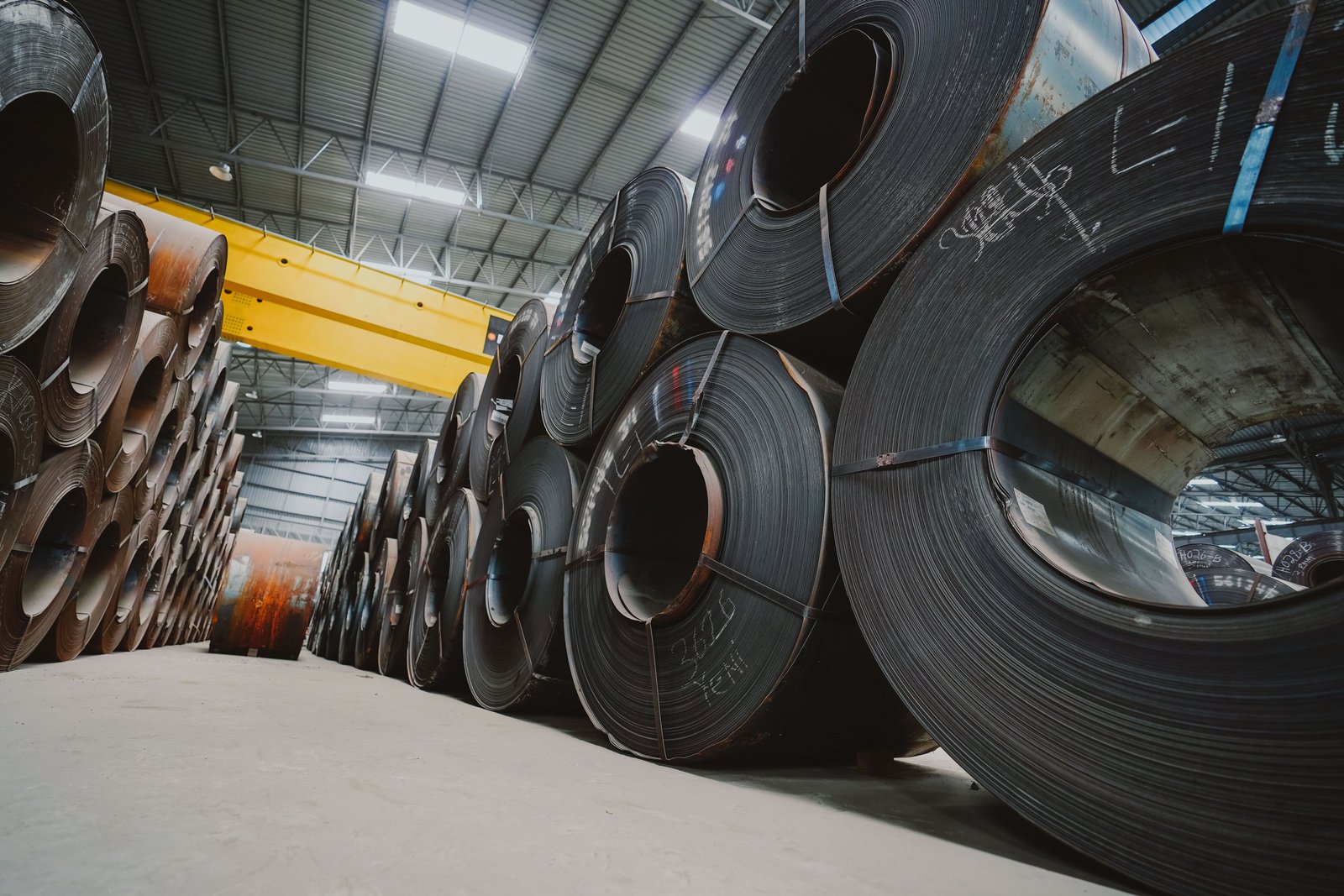
Monitoring and adjusting annealing parameters is the practical application of all the principles we've discussed. It's the bridge between theoretical knowledge and consistent, real-world production. An effective monitoring strategy isn't just about placing a few sensors; it's about creating a closed-loop system of feedback and control. This system should track the four primary variables—temperature, time (via line speed), atmosphere, and cooling rate—and present the data in a way that is easy to interpret and act upon. The goal is to catch deviations before they result in non-conforming products, thereby reducing scrap and improving overall equipment effectiveness (OEE). The most advanced systems use this data not just for real-time control but also for process analysis, predictive maintenance, and quality traceability for every coil or batch produced.
The Core Instrumentation for Process Control
A well-instrumented bright annealing line is built on a foundation of reliable sensors. For temperature, this means multiple thermocouples placed strategically throughout the heating and cooling zones. They shouldn't just be near the heating elements but also positioned to measure the actual product temperature as accurately as possible. Non-contact pyrometers are often used for this purpose in continuous lines. For atmosphere control, an in-situ oxygen (O₂) probe and a dew point analyzer4 are non-negotiable. The oxygen probe provides a rapid check for air leaks, while the dew point analyzer gives the critical measure of moisture content. Gas flow meters are also essential to ensure the protective atmosphere is being supplied at the specified rate.
Line speed in a continuous furnace, which dictates the annealing time, must be precisely controlled and monitored using a tachometer. All of these sensor inputs should feed into a central Programmable Logic Controller (PLC). The PLC is the brain of the operation; it executes the control logic, comparing the real-time sensor readings (the process variables) to the desired settings (the setpoints) and making automatic adjustments to heating elements, fan speeds, and valve positions to keep the process in line.
At AKS, we design our furnaces with this integrated control philosophy from the ground up. Our control cabinets are not just a collection of switches; they are the nerve center of the furnace, providing a comprehensive Human-Machine Interface (HMI) that visualizes the entire process. This allows operators to see trend graphs of the temperature profile, monitor the live dew point, and receive alarms if any parameter deviates from the norm.
From Data Logging to Process Optimization
Simply having the data is only the first step; using it effectively is what creates a competitive advantage. The PLC or an overarching SCADA system should log all critical process data, timestamping it and linking it to the specific coil or batch being processed. This historical data is invaluable. For instance, if a customer reports an issue with a specific batch, you can pull up the complete annealing history for that product. You can verify that the temperature profile was correct, the dew point was within spec, and the cooling rate was adequate. This provides unprecedented traceability and is a powerful quality assurance tool.
This data also fuels continuous improvement. By analyzing trends over weeks and months, engineers can identify subtle process drifts or opportunities for optimization. We worked with a client producing stainless steel strips for white goods. By analyzing their data, they noticed that their energy consumption per ton of steel was slightly higher on colder winter days. They correlated this with a longer time needed to reach a stable dew point in the mornings. Based on this insight, they adjusted their startup procedure for colder ambient temperatures, implementing a slightly longer pre-purge. This simple, data-driven change saved them thousands in energy costs and improved the consistency of their first batch of the day.
This level of analysis moves a company from being merely a manufacturer to being a high-tech process expert. It allows for the refinement of operating procedures based on evidence, not anecdotes.
The Role of the Operator in a Data-Rich Environment
In an automated and monitored environment, the role of the furnace operator evolves. They are no longer just loading and unloading the furnace. They become process supervisors, responsible for monitoring the system's health and responding to alarms. A well-designed HMI is crucial here. It should present complex information in an intuitive graphical format. Instead of just a list of numbers, it can show a live profile of the strip's temperature as it moves through the furnace, with green, yellow, and red bands indicating the acceptable process window.
When an alarm does occur—for example, a sudden rise in dew point—the operator can use the trend data to diagnose the issue. Did it correspond with the start of a new coil of process gas? Perhaps the new cylinder is contaminated. Did it happen right after a new strip was welded on? Maybe the weld area wasn't properly cleaned. This ability to perform root cause analysis quickly is essential to minimizing downtime and scrap.
We believe that operator training is as important as the control system itself. When we commission a new furnace line like the one for Precision Pipes Ltd., we don't just hand over the keys. We run training sessions on how to interpret the HMI, how to respond to common alarms, and how to use the historical data for basic troubleshooting. Empowering operators with this knowledge ensures that the sophisticated monitoring and control system is used to its full potential, safeguarding quality and efficiency around the clock.
Dew point analyzers measure moisture contentTrue
Dew point analyzers are critical for monitoring the moisture content in the annealing atmosphere, which directly affects product quality.
Visual inspection alone ensures qualityFalse
Visual inspection at the end of the line cannot detect process deviations or identify root causes of quality issues during annealing.
What are the recommended practices for efficient stainless steel bright annealing?
Are you getting good results, but your process feels inefficient and costly? True optimization goes beyond just quality; it encompasses energy usage, throughput, and maintenance. Adopting a holistic set of best practices can transform your annealing operation into a lean, efficient, and more profitable process.
For efficient stainless steel bright annealing, start with meticulously clean and dry material. Utilize a data-driven approach with automated process controls, maintain furnace integrity to prevent leaks, and implement a waste heat recovery system. Regular maintenance and operator training are also key to maximizing uptime and efficiency.
Achieving a bright, perfectly annealed product is one thing; doing so efficiently and cost-effectively is another. The most successful manufacturers I've worked with are those who view their annealing line not as a standalone piece of equipment, but as an integrated system where every element contributes to the bottom line. This means looking beyond the immediate technical parameters and focusing on the entire operational lifecycle. It involves rigorous preparation of materials before they even enter the furnace, implementing smart energy-saving technologies, and establishing robust maintenance routines to prevent costly downtime. It’s about cultivating a culture of precision and efficiency. For example, Precision Pipes Ltd. saw a 15% reduction in their natural gas consumption after we helped them implement a waste heat recovery system and optimize their furnace idling procedures. These efficiency gains dropped straight to their bottom line, proving that best practices are not just about making a better product, but about building a stronger business.
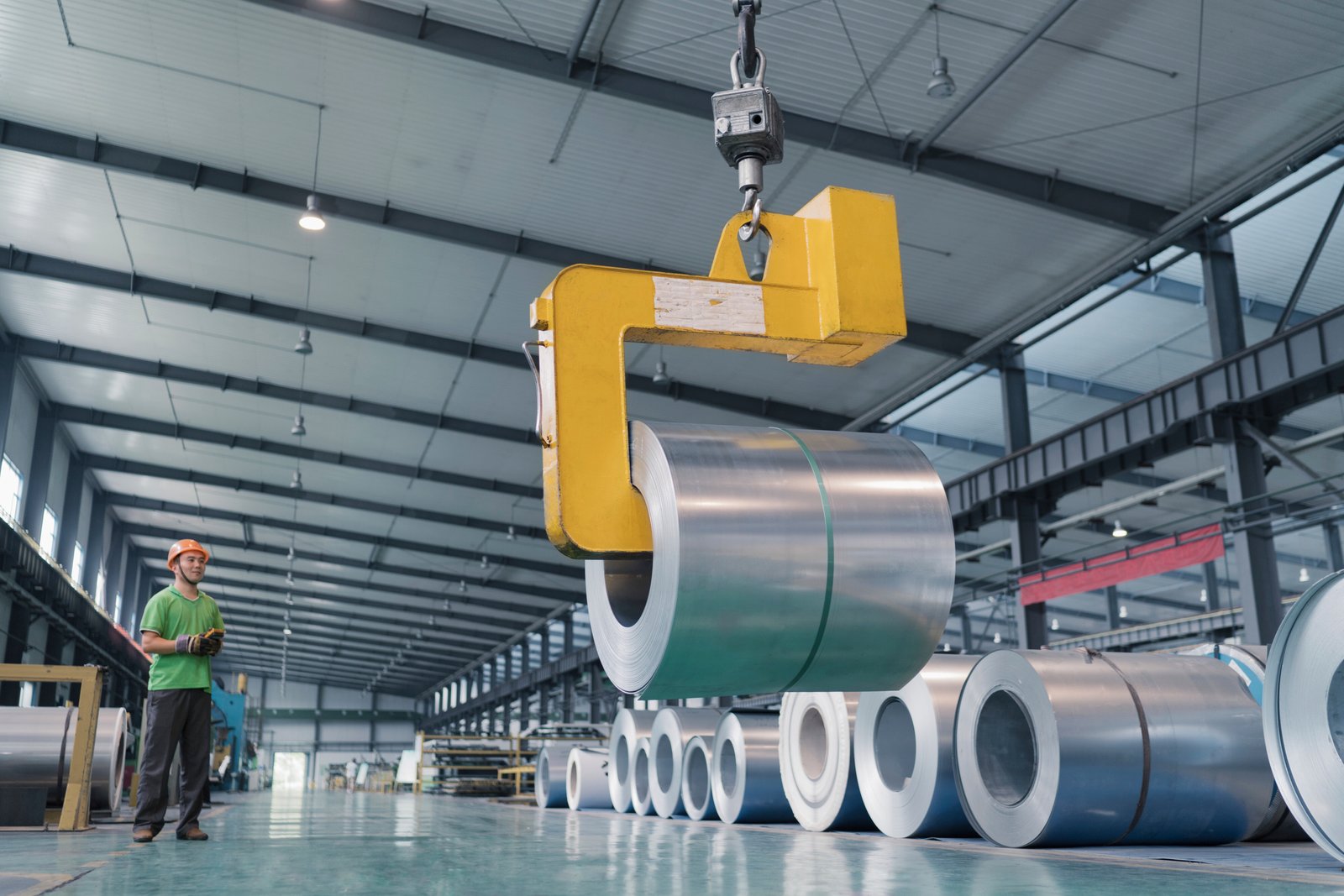
Recommended practices for efficient bright annealing can be grouped into three main areas: preparation (what happens before the furnace), process optimization (what happens inside the furnace), and preservation (what happens to maintain the system). Excelling in all three areas creates a virtuous cycle of quality and efficiency. A well-prepared product puts less strain on the furnace atmosphere. An optimized process uses the minimum required energy and time to achieve the desired result. And a well-preserved furnace operates reliably and consistently, minimizing unplanned stops and ensuring the first part is as good as the last. This comprehensive approach moves beyond simply meeting the spec to achieving operational excellence.
Preparation: The Foundation of Efficiency
The efficiency of a bright annealing process begins long before the steel enters the heating chamber. The single most important preparatory step is cleaning. Any residual lubricants, oils, or drawing compounds left on the material from previous forming processes will vaporize at high temperatures. This has two major negative effects. First, these hydrocarbons will crack and can lead to carbon contamination on the steel's surface, a phenomenon known as "sooting," which ruins the bright finish. Second, and just as critically, their decomposition products will contaminate the protective atmosphere, causing a sharp rise in the dew point and consuming the reducing potential of the hydrogen gas. This forces the system to use more protective gas to maintain a reducing environment, driving up operational costs.
Therefore, a robust, multi-stage degreasing and cleaning process is not an optional extra; it is a prerequisite for efficient bright annealing. The parts must be completely clean and, just as importantly, completely dry. Any water dragged into the furnace is a direct injection of moisture, the enemy of a low dew point. Investing in a high-quality pre-cleaning line is one of the best ways to ensure the efficiency and consistency of the downstream annealing process.
Another aspect of preparation is material handling. Ensuring that coils or parts are loaded correctly and that strip-to-strip welds in continuous lines are smooth and clean prevents operational hitches that can lead to costly downtime and material scrap.
Process Optimization: Smart and Lean Operation
Inside the furnace, efficiency is about using energy and process gas intelligently. One of the most significant technological advancements here is the Waste Heat Recovery System. In a traditional furnace, hot exhaust gases are simply vented into the atmosphere, carrying away a tremendous amount of thermal energy. Our AKS furnaces integrate a dual-layer furnace chamber that acts as a heat exchanger. The hot gases exiting the muffle are used to preheat the incoming cold strip and the protective atmosphere gas. By recycling this waste heat, the furnace's burners don't have to work as hard to get the product to the target temperature. This can reduce overall energy consumption by 15-20%, a substantial saving in an energy-intensive process.
Process gas management is another key area. Using high-purity gas is essential, but using too much is wasteful. An automated flow control system linked to the oxygen and dew point sensors can modulate the gas flow rate. During stable operation, the flow can be reduced to a minimum safe level. If a momentary upset (like a small leak) is detected, the system can automatically increase the flow to purge the contaminants and protect the product.
Furthermore, optimizing furnace idling procedures during short production gaps can yield significant savings. Instead of shutting down, the furnace can be held at a lower standby temperature with a reduced atmosphere flow, allowing it to return to production temperature much more quickly and with less energy than a full cold start. Developing these smart operating procedures, guided by data from the control system, is a hallmark of an efficient operation.
Preservation: Proactive Maintenance for Maximum Uptime
ly, a furnace is a complex piece of machinery that requires regular, proactive maintenance to remain efficient. A "run to fail" approach is a recipe for expensive, unplanned downtime and inconsistent product quality. A good preservation program includes regular checks of all critical systems. This includes calibrating thermocouples and gas sensors to ensure the data driving the process is accurate. It involves inspecting door seals, gaskets, and supply lines for leaks that could compromise the atmosphere. The refractory lining should be inspected for cracks or degradation.
A key, but often overlooked, task is maintaining the muffle or retort—the sealed inner chamber that contains the protective atmosphere. Regular inspections and leak tests (pressure decay tests) are critical. A small crack in the muffle can lead to persistent, hard-to-diagnose quality problems. Similarly, the components of the rapid cooling system, such as fans and heat exchangers, must be kept clean and in good working order to ensure they provide the necessary cooling performance.
At AKS, we partner with our clients to develop a customized preventive maintenance schedule based on their specific furnace and production intensity. We provide training for their maintenance staff and offer technical service support. This partnership approach ensures the furnace continues to operate at the peak efficiency and quality it was designed for, protecting the client's investment and ensuring reliable production for years to come. For Precision Pipes Ltd., this proactive approach to maintenance has virtually eliminated unplanned downtime on their annealing line.
Clean material improves annealing efficiencyTrue
Meticulously clean and dry material prevents contamination and reduces protective gas consumption during bright annealing.
Furnace leaks don't affect efficiencyFalse
Furnace leaks compromise atmosphere integrity, increase gas consumption, and can lead to quality issues - making them critical to efficiency.
Conclusion
Ultimately, optimizing the bright annealing of stainless steel hinges on the precise and synergistic control of time, temperature, atmosphere, and cooling rate. Mastering these parameters through data-driven monitoring and best practices ensures consistent quality, enhances material properties, and boosts operational efficiency and profitability.
-
Understand the benefits of reducing atmospheres in bright annealing ↩
-
Explore how the Ellingham Diagram relates to metal oxide stability ↩
-
Insights on applications and benefits of different stainless steel grades ↩
-
Understand the role of these devices in maintaining atmosphere quality during annealing ↩
